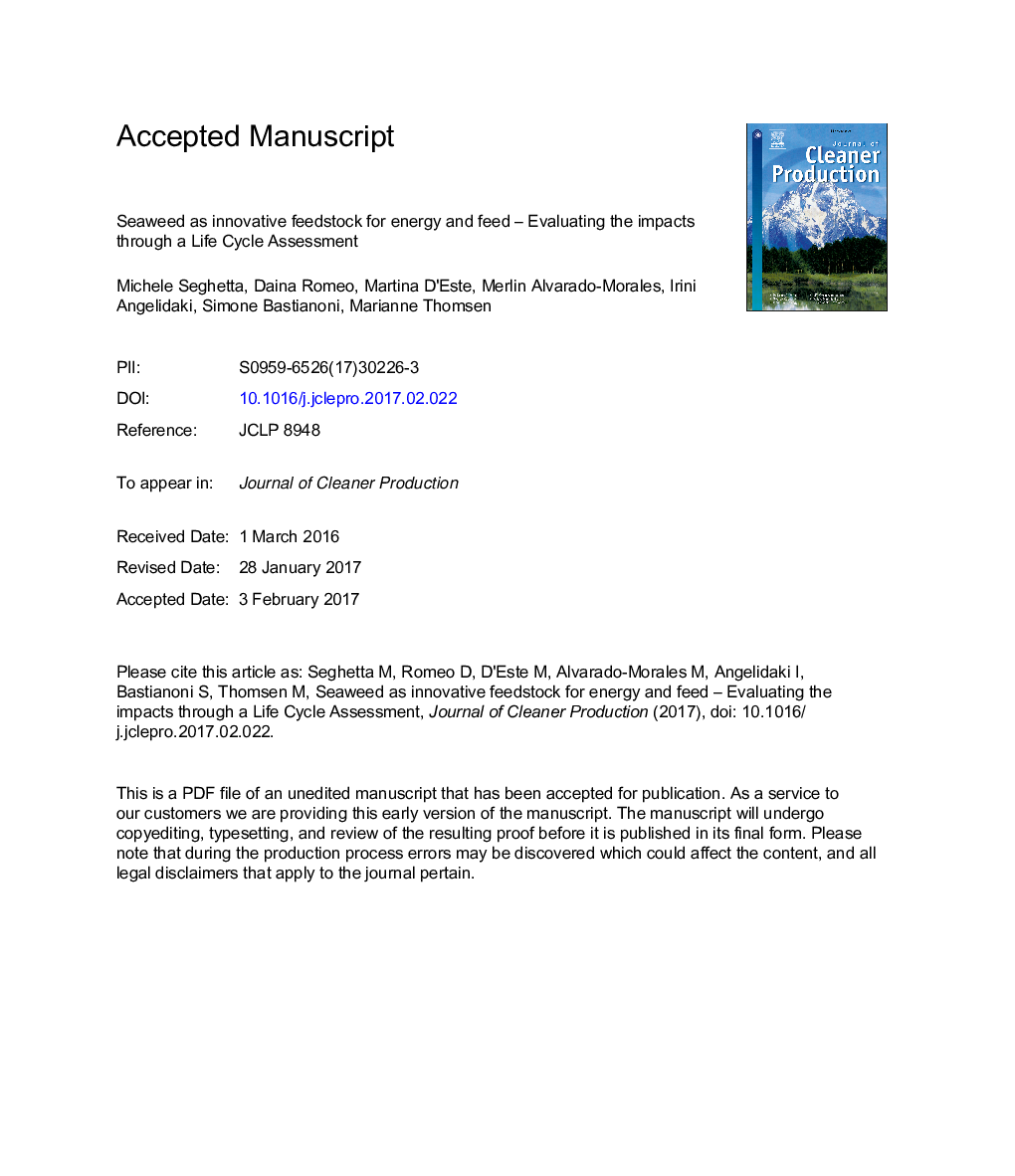| کد مقاله | کد نشریه | سال انتشار | مقاله انگلیسی | نسخه تمام متن |
|---|---|---|---|---|
| 5480564 | 1522103 | 2017 | 35 صفحه PDF | دانلود رایگان |
عنوان انگلیسی مقاله ISI
Seaweed as innovative feedstock for energy and feed - Evaluating the impacts through a Life Cycle Assessment
ترجمه فارسی عنوان
جلبک دریایی به عنوان مواد اولیه برای انرژی و تغذیه - ارزیابی اثرات از طریق یک ارزیابی چرخه زندگی
دانلود مقاله + سفارش ترجمه
دانلود مقاله ISI انگلیسی
رایگان برای ایرانیان
کلمات کلیدی
موضوعات مرتبط
مهندسی و علوم پایه
مهندسی انرژی
انرژی های تجدید پذیر، توسعه پایدار و محیط زیست
چکیده انگلیسی
Offshore cultivation of seaweed provides an innovative feedstock for biobased products supporting blue growth in northern Europe. This paper analyzes two alternative exploitation pathways: energy and protein production. The first pathway is based on anaerobic digestion of seaweed which is converted into biogas, for production of electricity and heat, and digestate, used as fertilizer; the second pathway uses seaweed hydrolysate as a substrate for cultivation of heterotrophic microalgae. As a result the seaweed sugars are consumed while new proteins are produced enhancing the total output. We performed a comparative Life Cycle Assessment of five scenarios identifying the critical features affecting resource efficiency and environmental performance of the systems with the aim of providing decision support for the design of future industrial scale production processes. The results show that all scenarios provide environmental benefits in terms of mitigation of climate change, with biogas production from dried Laminaria digitata being the most favorable scenario, quantified as â18.7*102 kg CO2 eq./ha. This scenario presents also the lowest consumption of total cumulative energy demand, 1.7*104 MJ/ha, and even resulting in a net reduction of the fossil energy fraction, â1.9*104 MJ/ha compared to a situation without seaweed cultivation. All scenarios provide mitigation of marine eutrophication thanks to bioextraction of nitrogen and phosphorus during seaweed growth. The material consumption for seeded lines has 2-20 times higher impact on human toxicity (cancer) than the reduction achieved by energy and protein substitution. However, minor changes in cultivation design, i.e. use of stones instead of iron as ballast to weight the seeded lines, dramatically reduces human toxicity (cancer). Externalities from the use of digestate as fertilizer affect human toxicity (non-cancer) due to transfer of arsenic from aquatic environment to agricultural soil. However concentration of heavy metals in digestate does not exceed the limit established by Danish regulation. The assessment identifies seaweed productivity as the key parameter to further improve the performance of the production systems which are a promising service provider of environmental restoration and climate change mitigation.
ناشر
Database: Elsevier - ScienceDirect (ساینس دایرکت)
Journal: Journal of Cleaner Production - Volume 150, 1 May 2017, Pages 1-15
Journal: Journal of Cleaner Production - Volume 150, 1 May 2017, Pages 1-15
نویسندگان
Michele Seghetta, Daina Romeo, Martina D'Este, Merlin Alvarado-Morales, Irini Angelidaki, Simone Bastianoni, Marianne Thomsen,
